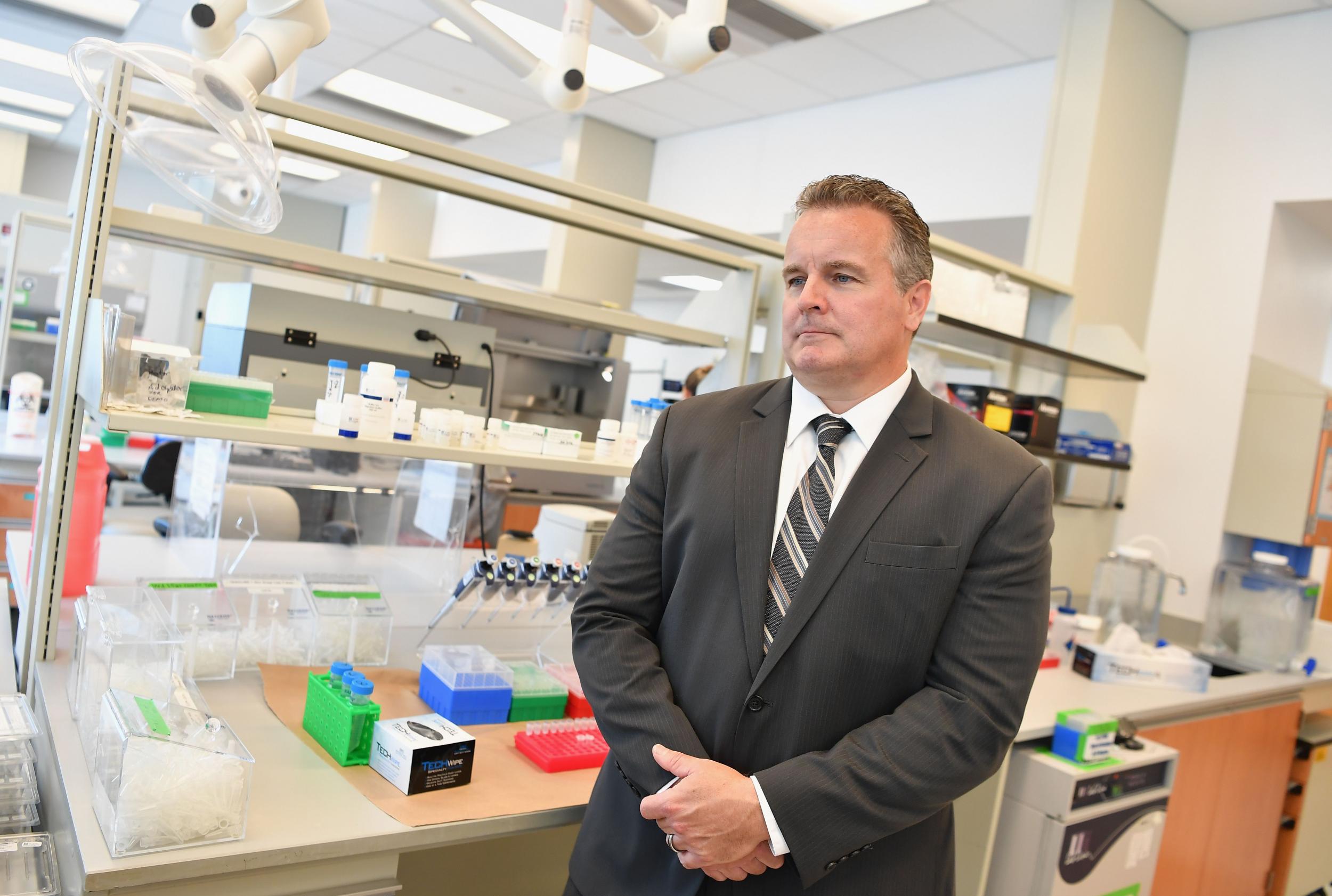‘This has defined my career’: New York medical examiners still working to identify more than 1,000 World Trade Centre victims, 17 years later
Just over half of the nearly 3,000 victims have been officially accounted for so far

Seventeen years after two planes struck the World Trade Centre in New York City, a dedicated team of scientists is still working to identify more than 1,000 of the victims.
Just over half of the 2,753 people who died in the terror attacks on 11 September, 2001 have been accounted for through forensics. Another 1,111 have yet to be identified, despite the best efforts of 10 experts at the best-equipped, most advanced laboratory in North America.
"This has defined my career," said Mark Desire, the assistant director of forensic biology at the Office of Chief Medical Examiner in New York, who is the only remaining member of the original team.
"We're very close with the families and that's uncommon for forensic scientists,” he told the AFP. “We're all trained to be impartial, to be unbiased, to not get emotional. But the World Trade Centre is different."
Using primarily DNA evidence, team identified some 1,200 victims in the year after 9/11, according to the New York Post. But progress slowed considerably after that. Exposure to fire, heat, and jet fuel left many of the 22,000 pieces of human remains found at the site unusable – at least for a time.
This year, thanks to a significant technological advance, the lab has identified more than 100 victims – including a 26-year-old banker who had never been officially accounted for. The breakthrough came from the lab’s ability to extract DNA from bone, a notoriously unworkable source of evidence.
The process pioneered in the New York laboratory has now been used to identify victims of a 2013 train wreck in Quebec, as well as those who went missing on a migrant corridor from Central America to the US, according to the Post. Teams from South Africa to Argentina now come to New York to learn from the scientists.
While such breakthroughs can be rewarding, the team’s work is often bittersweet. Identification can only be made by comparing remains to a DNA sample provided by families – a difficult request for the scientists. At least 100 families have opted not to provide a sample, possibly because they prefer not to know.
The family of the young financial worker, Scott Michael Johnson, said they made their son’s identification public in order to show their appreciation for the team, and to inspire hope.
“Having said that, it’s also made me cry,” his mother, Ann Johnson, told the New York Times.
She added: “You get pulled right back into it and it also means there’s a finality. Somehow I always thought he would just walk up and say, ‘Here I am. I had amnesia’."
Subscribe to Independent Premium to bookmark this article
Want to bookmark your favourite articles and stories to read or reference later? Start your Independent Premium subscription today.

Join our commenting forum
Join thought-provoking conversations, follow other Independent readers and see their replies